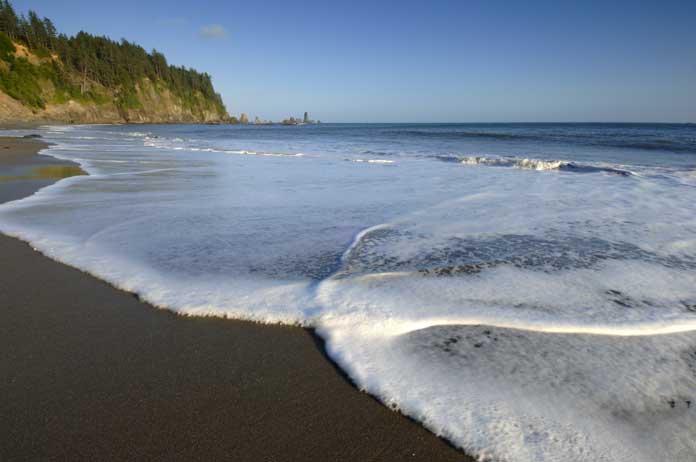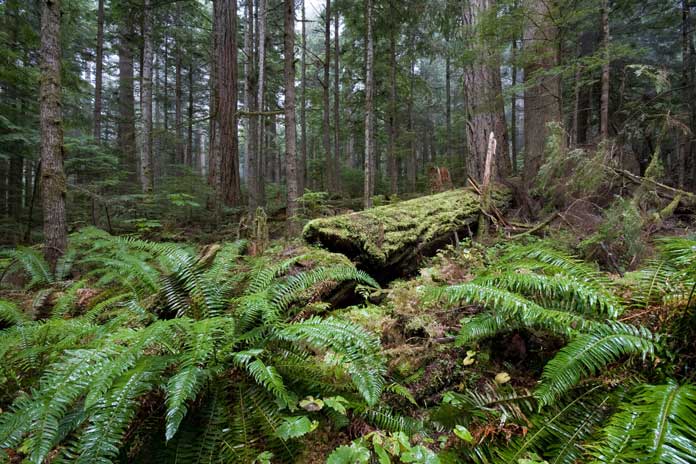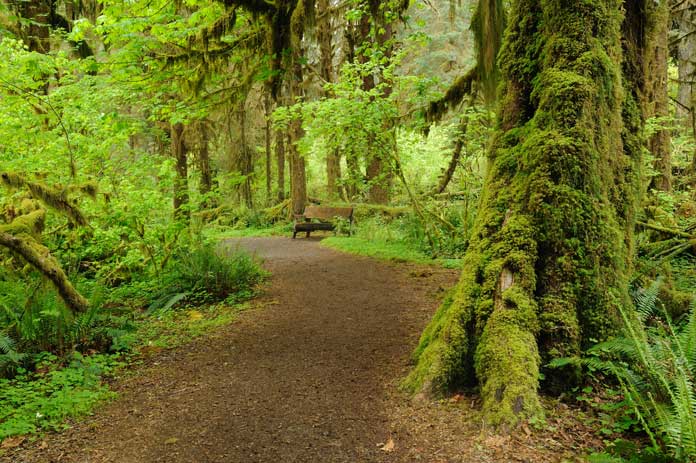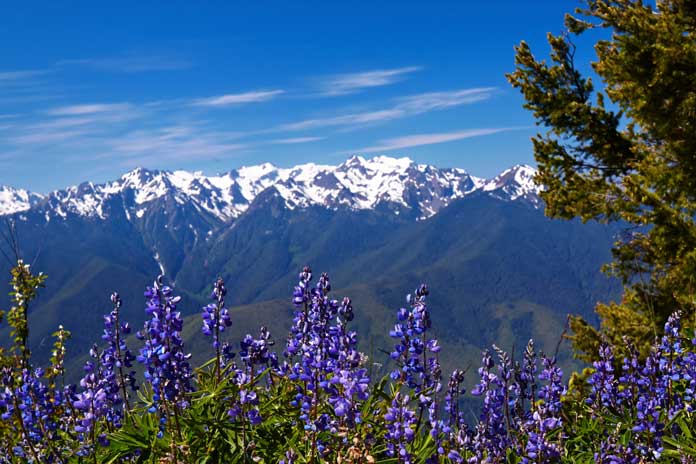Olympic National Park can be found in the far northwest corner of the United States in the state of Washington. The Olympic National Park is one of the more popular parks to visit, and the diverse landscape found within is impressive. The park has everything from jagged coastlines to meadows and mountains to temperate rainforests that look like they belong on another continent. Due to the diversity of the different landscaping, the park has something for everyone. The outstanding scenery is a given, along with hiking, the massive Western redcedar trees to see, wild elk grazing, scenic drives, a visitor center, programs and much more for visitors to experience.
Table of Contents
Exploring the Pacific Coast in Olympic National Park
There are a few places along the coast that are well worth your time. The coast is beautiful, with the dark blue ocean against sandy beaches with rocky cliffs and sea stack. Sea stacks are large, vertical columns of rock that seemingly appear out of the sea not too far from shore. They are geological landforms caused by the waves eroding away at rock and are a favorite feature to photograph, climb and are used for nesting for birds. Kalaloch Beach is a great place to visit. It has a wide, sandy beach ideal for walking and taking in the sights. Look for marine activity off in the water. Rialto Beach has terrific views of sea stacks and some of the offshore islands as well. Located two miles north of the beach at Hole-in-the-Wall there are a couple of tide pools which provide fantastic opportunities to see sea urchins, anemones, and sea stars. Lake Ozette is another great coastal place to visit. Visitors love to kayak and canoe here, and there are a few boardwalks that take you from the lake to the Pacific coast. The walks are about three miles long and are an excellent way to see the sights and two sources of water on a nice walk.

Temperate Rainforests
The western area of the Olympic National Park is where visitors can find the popular temperate rainforests. The forests are lush and green and full of huge trees, ferns, and moss. If you have ever seen the movie Twilight, it looks like the forests that the vampires run through in scenes in the film. A place known as Hoh is a favorite place for elk sightings, especially in the early mornings when they are out grazing. Two trails lead away from the visitor center into the lush forests, and they are the Hall of Mosses and Spruce Nature Trail. Both are relatively short trails and are easy to do. Queets Valley is a quieter place that receives less visitor traffic. Trails here offer a glimpse at some very remote and wild parts of the rainforest. The Queets River is also a hotspot for fisherman if you like to fish! Quinault has a few short trails that lead from the ranger station and past the historic homestead called the Kestner Homestead.

Eastern Old-Growth Forests
The eastern part of the Olympic National Park has forests that have Douglass Fir trees primarily. There is also a river to hike along and trails that travel up to higher elevations. Visit the Staircase which is a favorite camping spot and has many trails and lovely trees. The Dosewallips can be reached by foot or bike and has riverfront camping, wilderness trails and more to experience. Royal Basin is an area that can be achieved through the Olympic National Forest. Hikes lead through the forests and by the Royal Basin Lake for some beautiful views.
Northern Old-Growth Forests
This area is made up of three areas known as the Elwha Valley, Lake Crescent, and Sol Duc Valley. They are known for their beauty, and visitors enjoy the areas immensely. Elwha Valley is home to a former dam, lush lowland forest and trail access to Boulder Lake and historic Humes Ranch. Lake Crescent was created by glaciers and is a visitor favorite for swimming, kayaking and picnicking. Several trails are accessed from this area including the Spruce Railroad trail, Pyramid Peak and a trail leading to Marymere Falls. Sol Duc Valley is the place to go backpacking into the wilderness for those who are interested. There are falls here, resort, Salmon Cascades and places to see the salmon swim the streams in the fall. The northern-old growth forests are some of the best places in the Olympic National Park to get away from it all and see a natural beauty.

Mountains
The mountains of Olympic National Park only add beauty to an already stunning scene. One of the most popular features in the park is Hurricane Ridge. It is an easily accessed mountainous area within the park and provides those views people are searching for. Deer Park is an area that can only be reached by dirt road and in the summer. There is a small campground here and a hike that leads to the top of Blue Mountain and another that leads to Gray Wolf Valley. Hurricane Ridge is a special place to see those scenic vistas and also the wildflowers during the warmer months. From the ridge, there is Hurricane Hill, and Klahhane Ridge trails to explore the area further. Obstruction Point is also only accessible during the summer months and by a dirt road. Here, there is a one-mile hike available that you can take to PJ Lake. On bright days from the point, you can see views of Mount Olympus so don’t forget that camera.

Things to Do in Olympic National Park
The list of things to do in Olympic National Park can go on forever, but taking a short hike or a scenic drive is a must to get to see some of the best of the park while you’re there. Because the Olympic National Park has so many different landscapes, it provides opportunities to do much more. The lakes and rivers offer a chance to swim; kayak or canoe and the mountains offer stunning views from some great hikes or a chance to mountain climb. The ocean gives visitors a chance to walk along the beach and capture images of the sea stacks and waves, or visit one of the tide pools that have sea anemones and sea stars in them. The winter months call for snowshoeing, skiing and climbing in the snow covered park and the rainforests make you feel like you’re in a whole other world. Visit all of the different areas or pick your favorite to explore. The backcountry and wilderness areas have even more exploration opportunities for visitors too. Where will you go in Olympic National Park?



